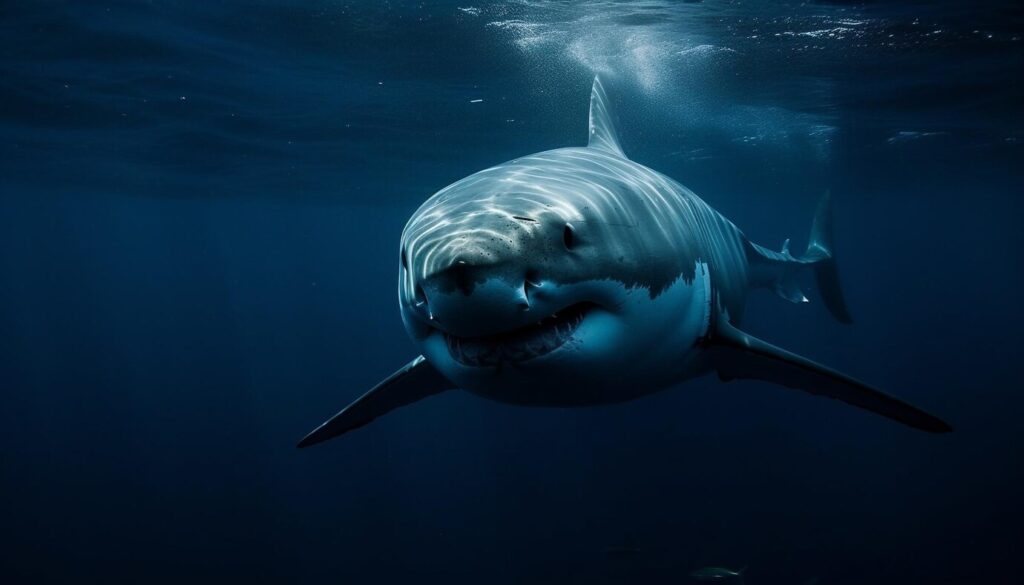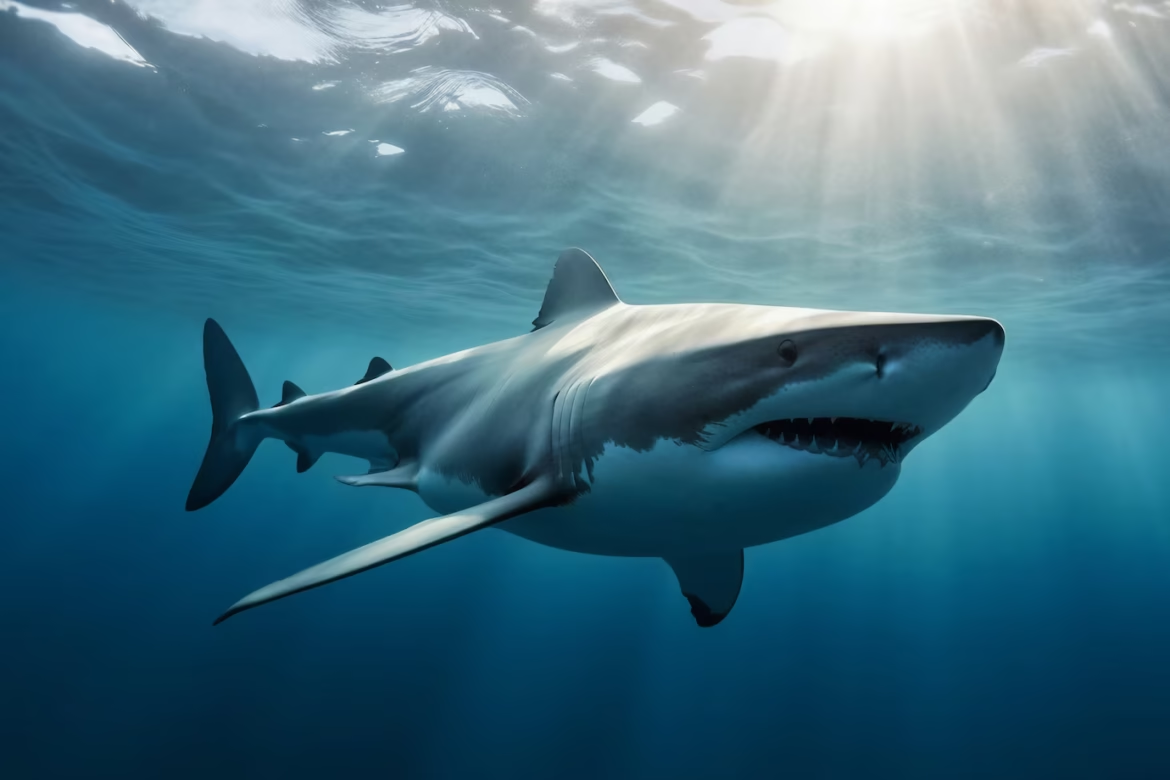The ocean is home to some of the most magnificent creatures, but none command the same level of awe and fear as the largest great white shark ever recorded. These colossal predators have fascinated marine biologists and shark enthusiasts for decades. While most great whites reach an average length of 11-15 feet, some individuals have surpassed this, growing to record-breaking sizes. The pursuit of understanding these giants has led researchers to remarkable discoveries, including the famous big blue great white shark, an enormous specimen sighted off the coast of Hawaii. In this article, we’ll explore the largest great white sharks ever documented, their habits, and their impact on marine ecosystems.
The Biggest Great White Sharks in History
Great white sharks (Carcharodon carcharias) have long been the subject of myths and legends. However, scientific records provide solid evidence of some truly gigantic individuals. Here are some of the largest white sharks ever recorded:
Deep Blue – The Queen of the Ocean
Deep Blue is perhaps the most famous big blue great white shark ever documented. Measuring approximately 20 feet long and weighing over 4,500 pounds, she was first identified off the coast of Guadalupe Island, Mexico. Believed to be over 50 years old, Deep Blue has been filmed multiple times, showcasing her massive girth and graceful movements.
The Canadian Colossus
In the 1980s, a gigantic great white shark estimated to be around 23 feet in length was reportedly caught in Canadian waters. Although no official measurements exist, anecdotal evidence suggests this might have been one of the largest great whites ever encountered.
The Cuban Giant
One of the most debated cases is a shark caught off the coast of Cuba in 1945. This shark allegedly measured 21 feet and weighed around 7,000 pounds. While the authenticity of these measurements has been questioned, it remains a part of shark lore.

Why Do Some Great White Sharks Grow So Large?
Scientists believe that several factors contribute to the extraordinary size of some great white sharks:
- Genetics: Certain lineages may possess genes that allow for greater growth potential.
- Diet: A high-calorie diet consisting of seals, sea lions, and large fish fuels rapid growth.
- Age: Older sharks tend to be larger. Since great whites can live up to 70 years, they continue growing throughout their lives.
- Environmental Factors: Warmer waters and abundant food sources can lead to larger body sizes.
Behavior and Hunting Tactics of Giant Great Whites
The largest great white shark is not only defined by size but also by its unique behavior. Larger sharks tend to exhibit different hunting tactics compared to smaller individuals. These apex predators use their incredible speed, stealth, and powerful bite to ambush prey.
Breaching Behavior
One of the most spectacular hunting techniques employed by great whites is breaching. When hunting seals, sharks propel themselves out of the water in a dramatic, high-speed attack. This technique is often observed near Seal Island in South Africa.
Scavenging Opportunists
Despite their fearsome reputation, great white sharks are also opportunistic feeders. Large individuals have been spotted feeding on whale carcasses, taking advantage of an easy meal.
Conservation Status and Threats
Despite their fearsome image, great white sharks are vulnerable to numerous threats. Overfishing, bycatch, and habitat destruction have led to declining populations worldwide. Conservationists emphasize the need to protect these apex predators, as they play a crucial role in maintaining healthy ocean ecosystems.
Protective Measures in Place
- Many countries have implemented fishing bans on great white sharks.
- Marine protected areas help safeguard their habitats.
- Tracking programs and research initiatives provide valuable data to aid conservation efforts.
Conclusion

The ocean continues to be a realm of mystery, and the largest great white shark remains a subject of fascination for marine researchers and the public alike. Whether it’s Deep Blue or another undiscovered giant lurking in the depths, these magnificent creatures are a testament to the wonders of the natural world. As we continue to study and protect them, we ensure that future generations can marvel at the beauty and power of these oceanic titans. The big blue great white shark is not just a legend but a living symbol of marine conservation.
FAQs
1. What is the largest great white shark ever recorded?
The largest confirmed great white shark is Deep Blue, measuring about 20 feet in length and weighing over 4,500 pounds.
2. Where was the biggest great white shark found?
Deep Blue was spotted near Guadalupe Island, Mexico, but large specimens have also been documented in Canada, Hawaii, and South Africa.
3. How long do great white sharks live?
Great white sharks can live up to 70 years, making them one of the longest-living cartilaginous fish species.
4. Are great white sharks dangerous to humans?
While great white sharks are apex predators, they do not typically seek out humans as prey. Most attacks are due to curiosity or mistaken identity.
5. Why are great white sharks important to the ecosystem?
As apex predators, great white sharks help maintain the balance of marine ecosystems by regulating prey populations and ensuring biodiversity.

